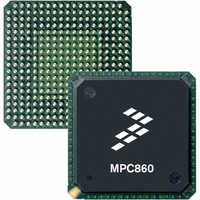MC68360VR25VL Freescale Semiconductor, MC68360VR25VL Datasheet - Page 568

MC68360VR25VL
Manufacturer Part Number
MC68360VR25VL
Description
IC MPU QUICC 25MHZ 357-PBGA
Manufacturer
Freescale Semiconductor
Datasheets
1.MC68EN360VR25L.pdf
(14 pages)
2.MC68EN360VR25L.pdf
(2 pages)
3.MC68360AI25L.pdf
(962 pages)
Specifications of MC68360VR25VL
Processor Type
M683xx 32-Bit
Speed
25MHz
Voltage
3.3V
Mounting Type
Surface Mount
Package / Case
357-PBGA
Family Name
M68000
Device Core
ColdFire
Device Core Size
32b
Frequency (max)
25MHz
Instruction Set Architecture
RISC
Operating Supply Voltage (max)
3.3V
Operating Supply Voltage (min)
2.7V
Operating Temp Range
0C to 70C
Operating Temperature Classification
Commercial
Mounting
Surface Mount
Pin Count
357
Package Type
BGA
Lead Free Status / RoHS Status
Lead free / RoHS Compliant
Features
-
Lead Free Status / Rohs Status
Compliant
Available stocks
Company
Part Number
Manufacturer
Quantity
Price
Company:
Part Number:
MC68360VR25VL
Manufacturer:
Exar
Quantity:
160
Company:
Part Number:
MC68360VR25VL
Manufacturer:
Freescale Semiconductor
Quantity:
10 000
Company:
Part Number:
MC68360VR25VLR2
Manufacturer:
Freescale Semiconductor
Quantity:
10 000
- Current page: 568 of 962
- Download datasheet (4Mb)
RSTRT
RRJCT
Serial Communication Controllers (SCCs)
The CAM control logic uses RSTRT, in combination with the RXD and RCLK signals, to
store the destination address, source address, etc. and generate writes to the CAM for
address recognition. In addition, the RENA signal supplied from the EEST may be used to
abort the comparison if a collision occurs on the receive frame.
After the comparison occurs, the CAM control logic asserts the receive reject (RRJCT) pin,
if the current receive frame should be rejected. The QUICC Ethernet controller will then
immediately stop writing data to system memory and will reuse the buffer(s) for the next
frame. If the CAM wishes to accept the frame, the CAM control logic does nothing (RRJCT
is not asserted). If RRJCT is asserted, it must be asserted prior to the end of the receive
frame.
7-244
RXD
NOTE: The receive data is sent directly from the EEST serial interface to the CAM using RXD and RCLK. RSTRT is asserted
at the beginning of the destination address. RRJCT should be asserted during the frame to cause the frame to be rejected.
The system bus is used for CAM initialization and maintenance.
PREAMBLE
7 BYTES
SYSTEM BUS
ADDRESS BIT FOR A DURATION OF ONE
ASSERTED ON SECOND DESTINATION
Figure 7-68. QUICC Ethernet Serial CAM Interface
DELIMITER
1 BYTE
FRAME
START
Freescale Semiconductor, Inc.
BIT TIME.
SDACK2–SDACK1
For More Information On This Product,
6 BYTES
QUICC
ADDR.
DEST.
SCC
PARALLEL I/O
TCLK (CLKx)
RCLK (CLKx)
FRAME TAG
TENA (RTS)
CLSN (CTS)
OPTIONAL
RENA (CD)
PB15–PB8
MC68360 USER’S MANUAL
BYTE
Go to: www.freescale.com
RSTRT
RRJCT
RxD
TxD
6 BYTES
SOURCE
ADDR.
SHIFT REGISTER
CAM CONTROL
2 BYTES
LENGTH
TYPE/
AND
FRAME REJECTED IF ASSERTED DURING FRAME RECEPTION.
RX
RENA
RCLK
CLSN
LOOP
TX
TENA
TCLK
FURTHER TRANSMISSIONS ON SYSTEM BUS CEASE, AND
MC68160
EEST
46–1500 BYTES
BUFFER DESCRIPTORS ARE REUSED.
DATA
CAM
TO MEDIA
SEQUENCE
4 BYTES
FRAME
CHECK
Related parts for MC68360VR25VL
Image
Part Number
Description
Manufacturer
Datasheet
Request
R
Part Number:
Description:
Manufacturer:
Freescale Semiconductor, Inc
Datasheet:

Part Number:
Description:
MC68360 MC68360 Multiple Ethernet Channels on the QUICC
Manufacturer:
Motorola / Freescale Semiconductor

Part Number:
Description:
MC68360 Implementing an 8 bit Eprom for an MC68EC040-MC68360 System
Manufacturer:
Motorola / Freescale Semiconductor

Part Number:
Description:
MC68360 Interfacing the MC68060 to the MC68360
Manufacturer:
Motorola / Freescale Semiconductor

Part Number:
Description:
MC68360 MC68360 RAM Microcode Package Option Overview
Manufacturer:
Motorola / Freescale Semiconductor

Part Number:
Description:
MC68360 MC68360 CPM-CPU Interaction
Manufacturer:
Motorola / Freescale Semiconductor

Part Number:
Description:
MC68360 Interfacing SDRAM to the MC68360 QUICC Device
Manufacturer:
Motorola / Freescale Semiconductor

Part Number:
Description:
MC68360 Interfacing the QUICC to a MCM516400 (4Mx4 10-12 column-row) DRAM
Manufacturer:
Motorola / Freescale Semiconductor

Part Number:
Description:
MC68360 Interfacing the 68360 (QUICC) to T1-E1 Systems
Manufacturer:
Motorola / Freescale Semiconductor

Part Number:
Description:
MC68360 Multiple QUICC Design Concept
Manufacturer:
Motorola / Freescale Semiconductor
Part Number:
Description:
Manufacturer:
Freescale Semiconductor, Inc
Datasheet:
Part Number:
Description:
Manufacturer:
Freescale Semiconductor, Inc
Datasheet:
Part Number:
Description:
Manufacturer:
Freescale Semiconductor, Inc
Datasheet:
Part Number:
Description:
Manufacturer:
Freescale Semiconductor, Inc
Datasheet:
Part Number:
Description:
Manufacturer:
Freescale Semiconductor, Inc
Datasheet:











